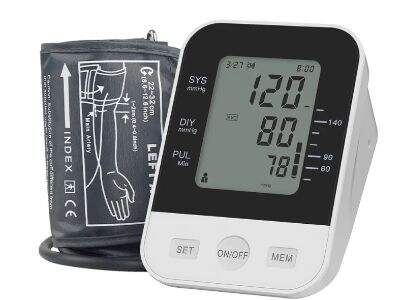דיגיטלי או ידני?
על ידי למידה על ההבדלים בין מכשירי מדידת לחץ דם דיגיטליים וידניים, תוכל להחליט איזה מהם מתאים לך בצורה הטובה ביותר. לשני האפשרויות יש יתרונות וחסרונות משל עצמם, ולכן חשוב להבין מהם לפני שבוחרים.
היתרונות והחסרונות של מוניטורים דיגיטליים למדידת לחץ הדם
מְדַבְּרֵי דָּבָר לְדִבּוּק דָּם אֵלֶקְטְרוֹנִי הם גם נוחים מכיוון שהכפפה מתנפחת אוטומטית, ולאחר מכן מתרוקנת לאחר המדידה. התוצאות גם קלות מאוד לקריאה על גבי מסך בצורה ברורה. אך מדי מונים דיגיטליים יכולים להיות יקרים יותר מהמודים הרגילים, וכן הם זקוקים לסוללות או למקור חשמל כדי להמשיך את פעולתם.
היתרונות של מד לחץ הדם ידני
מְדַבְּרֵי דָּבָר לְדִבּוּק דָּם יְדַעְתִּי הם זולים יותר, ואין הם תלויים בסוללות או ביציאת חשמל להפעלה. הם גם פופולריים בשל הדיוק שלהם בהשוואה למדדים דיגיטליים. אך מדד ידני עשוי להיות קצת יותר מורכב לשימוש מכיוון שעליכם למלא את הגומיה בעצמכם ולשמוע את פעימות הלב באמצעות סטטוסקופ.
יתרונות וחסרונות של מכשירים דיגיטליים וידניים
דיוק הוא עניין חשוב כשמדברים על מדידת הלחץ הדם שלך. דגמים דיגיטליים קלים לשימוש וקריאה, אך לא בהכרח הכי מדויקים. גורמים כמו גודל השרשראות, מיקום הגוף והפעילות שלך יכולים להשפיע על דיוק הקריאה הדיגיטלית. לעומת זאת, מדidores ידניים ידועים בכך שהם מספקים תוצאות אמינות ומדויקות, כל עוד משתמשים בהם נכון.
ברור שזה סובל-סיבתך האישית בבחירה הדיגיטלית מול הידנית, אבל בשבילי זה הייתה היכולת לעקוב אחרי המדידות שלי שוב כדי להשיג שליטה מחדש.
אם אתה רוצה את הנוחות הרבה ביותר ואינך צריך את המדידות החזקות ביותר, מדidor דיגיטלי עשוי להיות התאמה הטובה ביותר עבורך. אך אם דיוק הוא מה שאתה משתוקק אליו, מדidor ידני עשוי להיות התשובה.








